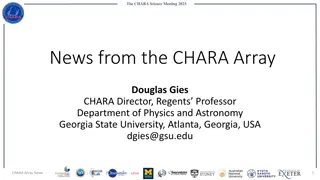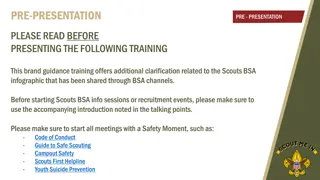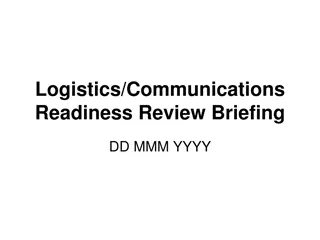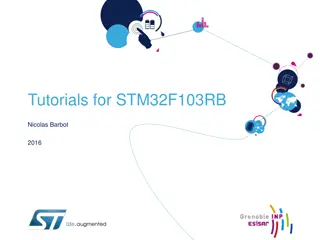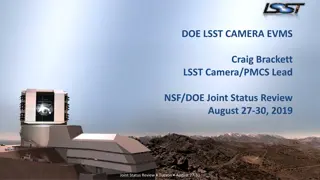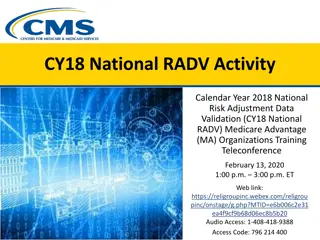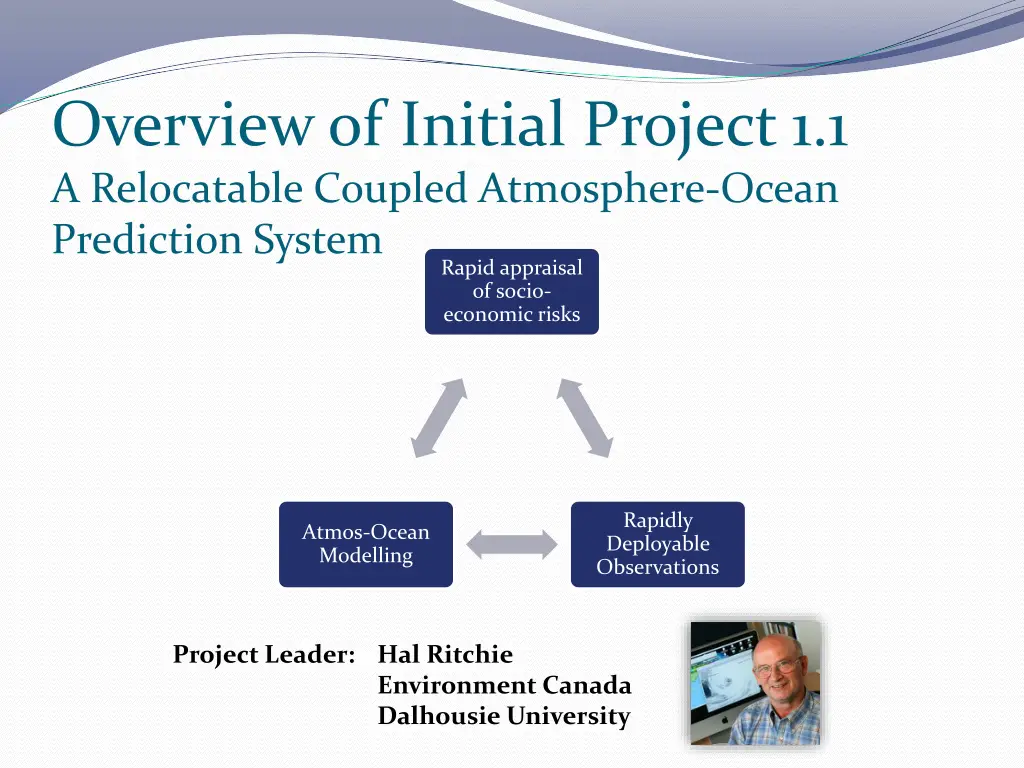
Coupled Atmosphere-Ocean Prediction System
"Explore the innovative Relocatable Coupled Atmosphere-Ocean Prediction System designed for rapid appraisal of socio-economic risks during emergencies. The project team led by Hal Ritchie aims to deploy a tested system capable of forecasting hazardous substances and transferring it for operational use by Environment Canada. Primary stakeholders include Environment Canada, Department of Fisheries & Oceans, and various industries. The approach involves extending EC & DFO concepts, constructing a relocatable model with data assimilation, and developing mechanisms for rapid socio-economic evaluation. Test and evaluation will be done using data from Halifax Harbour, Scotian Shelf, Strait of Georgia, and new environmental assessment systems. Products will be tailored for receptor groups and partners."
Download Presentation

Please find below an Image/Link to download the presentation.
The content on the website is provided AS IS for your information and personal use only. It may not be sold, licensed, or shared on other websites without obtaining consent from the author. If you encounter any issues during the download, it is possible that the publisher has removed the file from their server.
You are allowed to download the files provided on this website for personal or commercial use, subject to the condition that they are used lawfully. All files are the property of their respective owners.
The content on the website is provided AS IS for your information and personal use only. It may not be sold, licensed, or shared on other websites without obtaining consent from the author.
E N D
Presentation Transcript
Overview of Initial Project 1.1 A Relocatable Coupled Atmosphere-Ocean Prediction System Rapid appraisal of socio- economic risks Rapidly Deployable Observations Atmos-Ocean Modelling Project Leader: Hal Ritchie Environment Canada Dalhousie University
Project Team Researchers Multi-Sector Multi-discipline Hal Ritchie $ Dalhousie and EC Ken Lee $ Dalhousie and DFO oceanography, offshore oil & gas Mae Seto Dalhousie and DRDC Anthony Charles SMU Marlon Lewis Dalhousie Keith Thompson $ Dalhousie Doug Wallace Dalhousie Serge Desjardins EC Fred Whoriskey Dalhousie Gilbert Brunet $ McGill & EC Luc Fillion $ McGill & EC Greg Smith EC global and regional weather modelling defence observation systems marine socioeconomics & management ocean biology, observations & industry ocean modelling & data assimilation ocean tracers & technology marine & coastal meteorology ocean ecosystem observations meteorological dynamics & analysis atmospheric data assimilation global & regional atmosphere-ocean models biogeochemical & foodweb modelling ocean observations & analysis physical oceanography, observations Ken Denman Rich Pawlowicz $ Richard Dewey UVic and Venus UBC UVic
A Relocatable Coupled Atmosphere-Ocean Prediction System Outcomes A tested relocatable coupled atmosphere-wave-ocean data assimilation and forecast system capable of deployment within hours of an emergency will include new modules for forecasting movement and evolution of hazardous substances (and tracers). New mechanisms for rapid appraisal of socio-economic values and impacts during an emergency. Transfer of system to Environment Canada for operational use. Primary Stakeholders Environment Canada Department of Fishries & Oceans Canadian Coast Guard Defence Research & Development Canada Lloyd s Register Educational Trust Insurance industry Oil & gas industry
A Relocatable Coupled Atmosphere-Ocean Prediction System Approach: Extend EC & DFO CONCEPTS initiative: construct relocatableatmosphere-ocean-wave model with data assimilation capability Develop mechanisms for rapid appraisal of socioeconomic vulnerability and risks during emergencies including local-level, community- based approaches Test and evaluate model with data from Halifax Harbour / Scotian Shelf and Strait of Georgia (VENUS) and incorporate data from new systems for rapid environmental assessment (with Obs. Core) in addition to small-scale tracer-release experiment off Halifax (with Obs. Core) Develop data/information products for receptor groups and partners
Main Milestones by Year 3 development of relocatable capability of GEM-NEMO system. development of ocean data assimilation scheme for relocatable NEMO ocean model. initial testing and evaluation of relocatable NEMO model at VENUS site in collaboration with IP1.2. development of relocatable GEM atmospheric model and data assimilation scheme. demonstration of tracer evolution modules. development of relocatable tide and storm surge model to provide boundary conditions for relocatable NEMO. development of mechanisms for the rapid appraisal of socioeconomic values, vulnerabilities and risks associated with an emergency, on a spatially-explicit basis and including local-level community-based approaches. Papers in literature and student progress.
Main Milestones by Year 5 Compare progress (or not) between first and second partner workshops. Successful trials of relocatable system in specially designed field experiments in collaboration with the Observation Core, e.g. on the Scotian Shelf. Successful application of system Strait of Georgia, based on scientific evaluations and feedback from partners. Successful technology transfer of the relocatable system to Environment Canada. Successful demonstration of mechanisms for the rapid appraisal of socioeconomic values, vulnerabilities and risks associated with an emergency, on a spatially-explicit basis and including local-level community-based approaches. Papers in literature and quality of theses.
A Relocatable Coupled Atmosphere-Ocean Prediction System Problem: Hazards can be encountered anywhere along Canada s vast coastline and offshore areas at anytime (including regions undergoing new development and new economic uses) Canada requires rapidly- deployable prediction systems (to guide response to marine emergencies) Source: Spencer Platt/Getty Images

![❤[READ]❤ Deep Space Craft: An Overview of Interplanetary Flight (Springer Praxis](/thumb/21511/read-deep-space-craft-an-overview-of-interplanetary-flight-springer-praxis.jpg)




